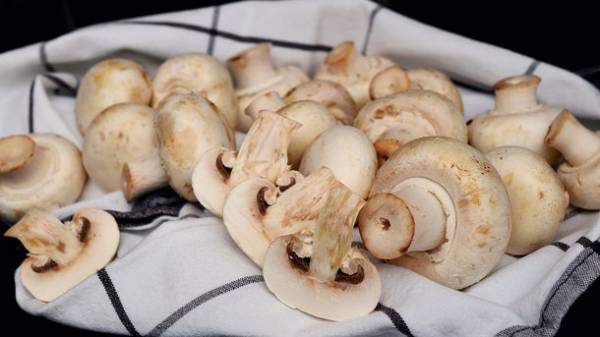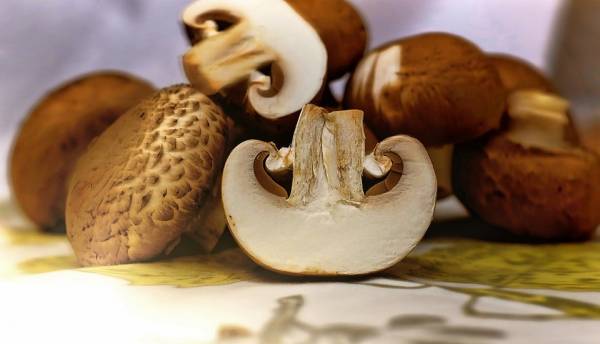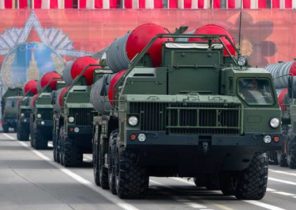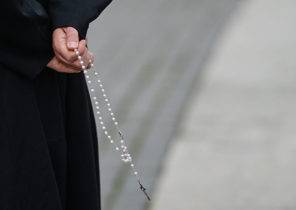
In Ukraine, more expensive mushrooms. A few days before Easter manufacturers raised the price from UAH 3 to 28 UAH/kg.
“This is the minimum value of mushrooms of good quality that are dispensed farms in returnable containers. Of course, packaged mushrooms in distribution networks are more expensive because the price includes not only the cost of packaging, but also shipping, shelf space, etc,” he told UBR the Director of the National mushroom Agency UMDIS Maxim yenchenko.
Retailers mushrooms from farms cost 33 to 40 UAH/kg. For Easter mushrooms can still be a little more expensive, but retail prices in supermarkets and the wholesale markets will depend on the existing stocks of goods.
Honey mushrooms over
In Ukraine there are no large producers of mushrooms. Many farms that could qualify for this status, was in the Donbas and went bankrupt because of the war. In the end, the market is characterized by frequent changes in prices: it all depends on the current supply and demand. For example, in the first quarter of 2017, prices have jumped from 22 to 40 UAH/kg.
And although companies try to adapt to the demand, it is not always possible.
“Since January we begin to adjust the production cycle are set to gather for Easter a great harvest. But it so happens that the demand does not grow as much as we expected. In the end — losses”, — complains representative of one of the small farms in the Kiev region.
The Agency UMDIS have analyzed the dynamics of price changes on the mushrooms before the Great lent, during it and after for eight years. Analysts pointed out that with each passing year, raising prices at the beginning of the second week of lent getting bigger. So, in 2010 and 2012, kilogram of mushrooms rose by UAH 8. In 2013 — 7 UAH, in 2015 and 2016 — 9 UAH, and in the 2017th — by as much as 13 UAH (40 UAH/kg). Then, after the third week of lent, prices begin to fall and just before Easter, their growth is resumed, and even then not always. For example, in 2012, the price of mushrooms directly before Easter was 4 C lower than in the post. And in 2013 and 2016, rates will have remained unchanged.
This year, according to market participants, there is a regular trend of increase of prices: on the eve of the mushrooms will release a minimum of at 29-30 UAH/kg.
But the demand for mushrooms is now small. “Rise at the last day,” predicts the producer of the Rivne region.
Usually after Easter the interest in mushrooms is falling, as the Ukrainians become more active to consume meat (during lent mushrooms are an alternative to animal protein). Accordingly, reduced and prices.
However, ordinary consumers will notice a price reduction on the price tags, not earlier than one week after the holiday, i.e. in the 20 days of April. Until that time, they will try to sell the goods purchased at higher prices.
Mushrooms for a living, shiitake — for the soul
The structure of demand on mushrooms in Ukraine is changing slowly, but still, according to Maxim Yenchenko, there are shifts in favour of the so-called Royal Agaricus (with brown hat). “This mushroom contains more dry matter (i.e., there is less water), so it is more dense and flavorful. It also keeps you marketable due to the brown cap, which eventually just becomes darker,” — say the producers.
Its share is gradually growing and today accounts for about 7% of the total sales of mushrooms. The lion’s share of the Ukrainian market, over 90%, take the white mushrooms. And there are reasons.
“Production technology of the Royal Agaricus is much more expensive and the selling price differs no more than 2-3 UAH/kg. So we keep the dark mushrooms for the range, and earn on the white”, — said the Director of geleka-M Igor Music.
 Royal mushrooms
Royal mushrooms
Despite the fact that in Europe, the share of the Royal mushroom is growing rapidly, providing approximately 30% of all sales. According to the Music that its production was profitable, the selling price must be at least 10% higher than the white mushroom.
Small market share (5%) are oyster mushrooms. And more exotic mushrooms (shiitake, Enoki and eringi), which are also grown in Ukraine, single households, the share is comparable with the statistical error, in the aggregate less than 1%.
Exotic mushrooms, the major networks try to buy for the range, as the price is higher at times, but because demand is minimal.
“There’s another technology of growing, when a small demand gives a very high cost. In addition, a large part of the exotic mushrooms is imported,” explains UMDIS.
For example, the price of Enoki mushroom from Thailand — 540 UAH/kg, Japanese SIMEI or shimeji 576 UAH/kg, Chinese shiitake — 210 UAH/kg.
 Shiitake mushrooms
Shiitake mushrooms
While loose white champignon is worth in trade networks, on average, 42 UAH/kg, and the Royal — 59 UAH/kg. of Fresh mushroom Packed in trays of polystyrene of different capacity is from 68.6 percent to 87.9 UAH UAH (in conversion to pounds). The smaller the weight, the more expensive is the mushroom. In wicker baskets from veneer mushrooms are sold on average 63 to 70 UAH/kg of Already sliced fresh mushrooms come in on average at 76 UAH/kg.
At the beginning of this week, the cheapest mushrooms was Exactly where agriculture released the goods for 21 UAH/kg (for comparison, in Kyiv — by UAH 22-25/kg). According to one of the local producers of mushrooms here were so many that attempt to capitalize on it before the holidays made even market traders stationery. This, according to the manufacturers here had not been observed.
Not mushroom summer
In the summer approaching, the demand for mushrooms traditionally is on the decline, as the Ukrainians go to the early vegetables and herbs. Price bottom expected in July-September, when the sale will go still and wild mushrooms.
“Many people prefer the forest, but not cultivated mushrooms. So everything will depend on weather conditions. If you will be a drought, and forest mushrooms will be little if on the contrary, the rains, the prices of farm the fungus may still be falling,” — said in UMDIS .
To smooth the influence of this factor, manufacturers traditionally reduce the cultivation of mushrooms in the summer, adjusting to current demand. “To buy more – it is necessary to promote consumption. But advertising costs money, and their manufacturers not,” says Music.







